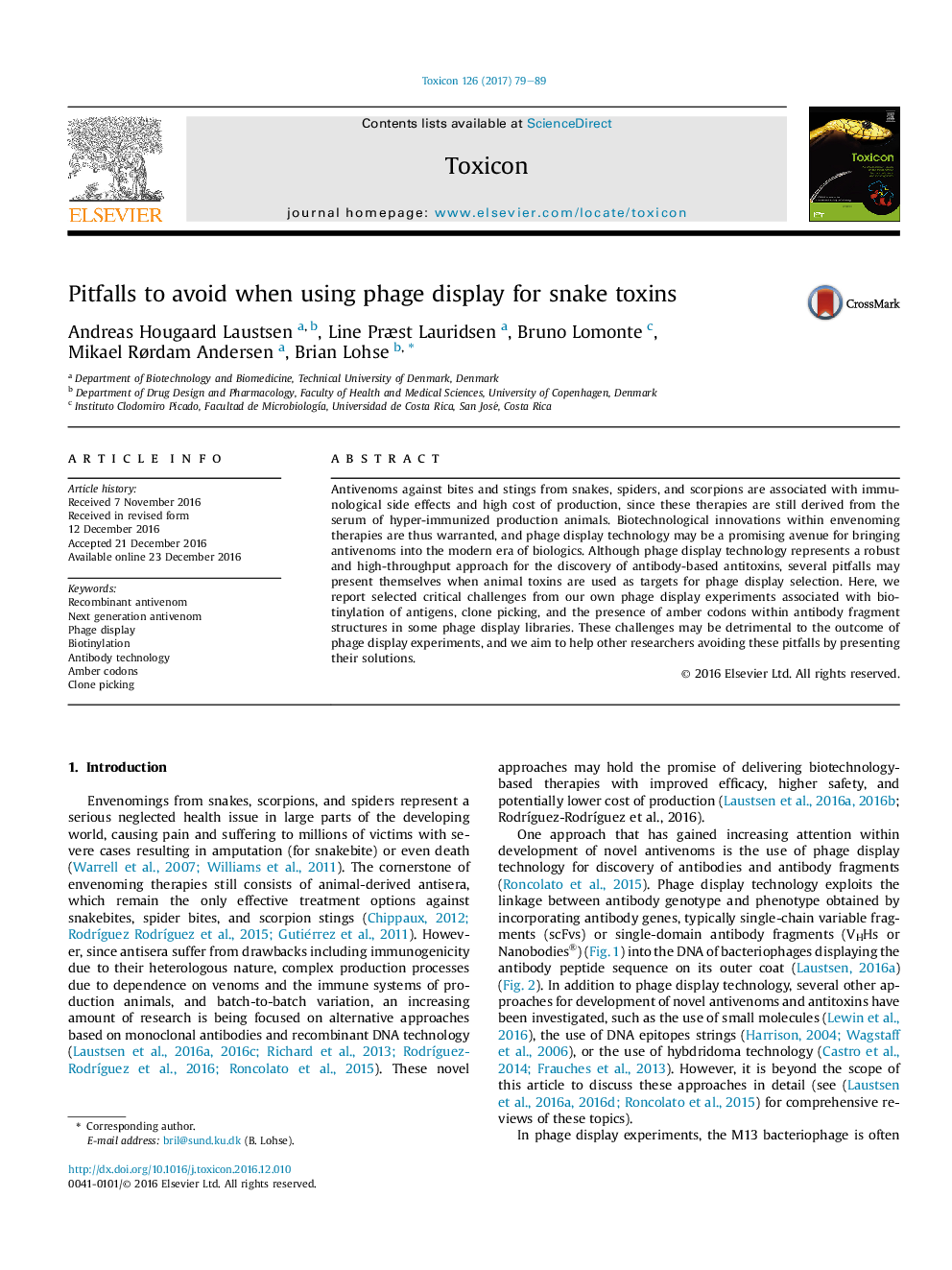| Article ID | Journal | Published Year | Pages | File Type |
|---|---|---|---|---|
| 5519384 | Toxicon | 2017 | 11 Pages |
Antivenoms against bites and stings from snakes, spiders, and scorpions are associated with immunological side effects and high cost of production, since these therapies are still derived from the serum of hyper-immunized production animals. Biotechnological innovations within envenoming therapies are thus warranted, and phage display technology may be a promising avenue for bringing antivenoms into the modern era of biologics. Although phage display technology represents a robust and high-throughput approach for the discovery of antibody-based antitoxins, several pitfalls may present themselves when animal toxins are used as targets for phage display selection. Here, we report selected critical challenges from our own phage display experiments associated with biotinylation of antigens, clone picking, and the presence of amber codons within antibody fragment structures in some phage display libraries. These challenges may be detrimental to the outcome of phage display experiments, and we aim to help other researchers avoiding these pitfalls by presenting their solutions.
